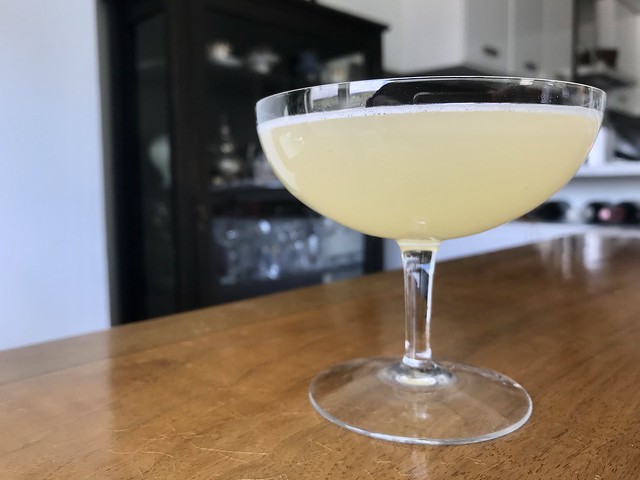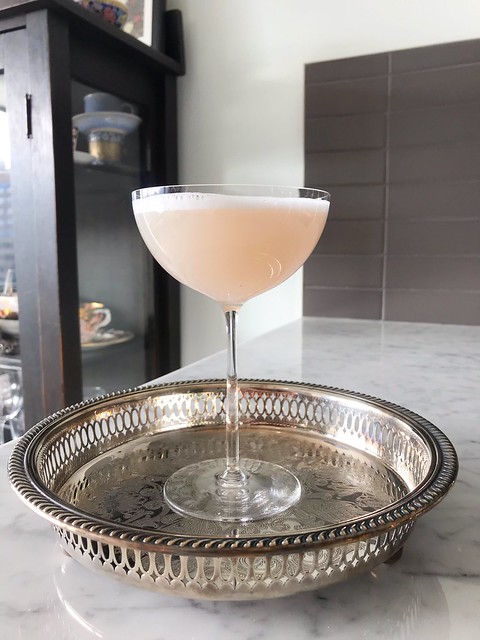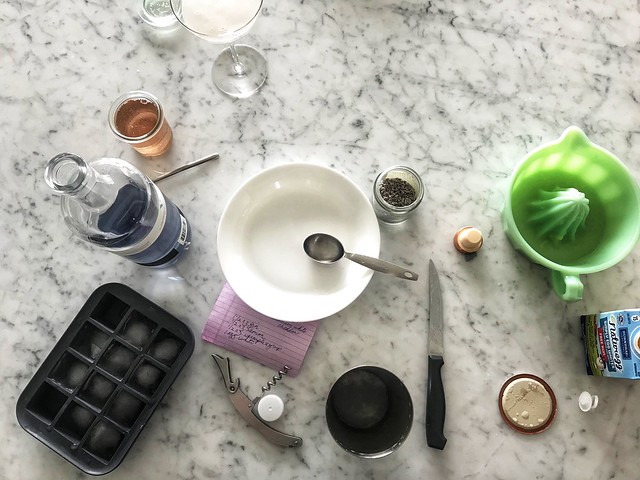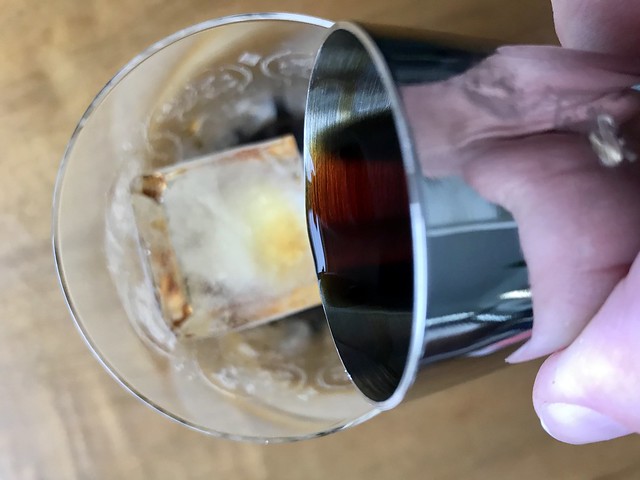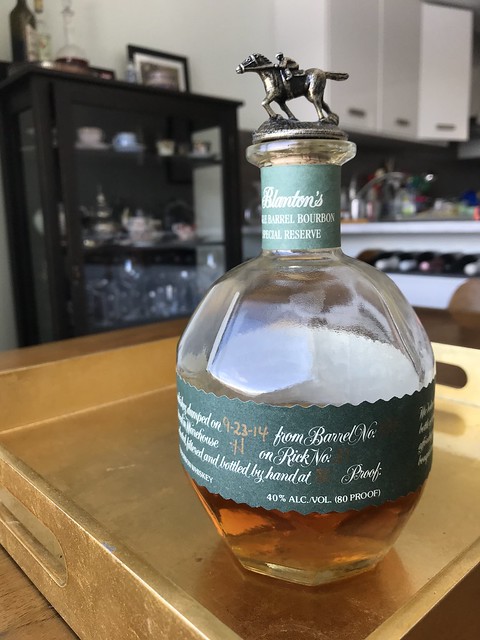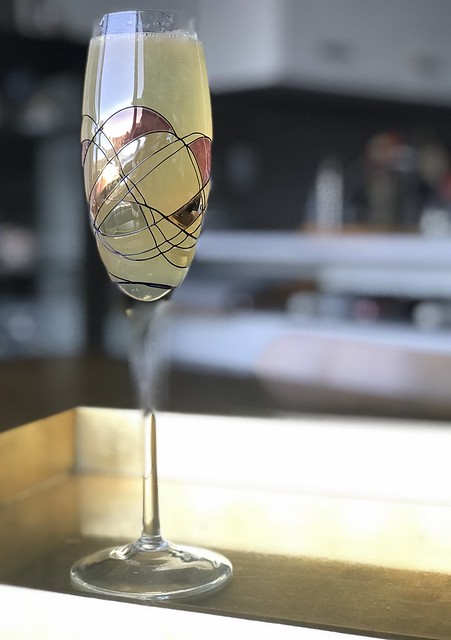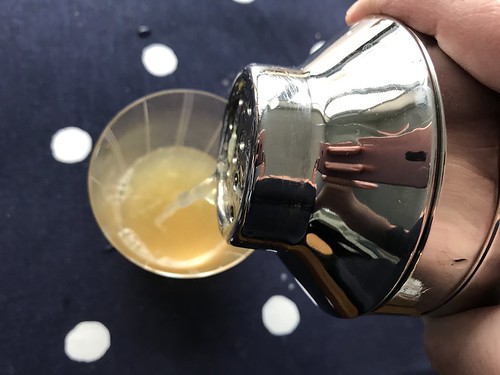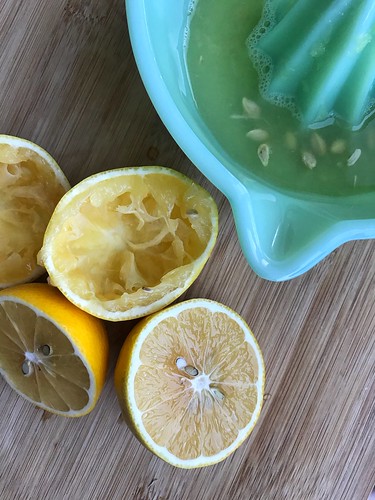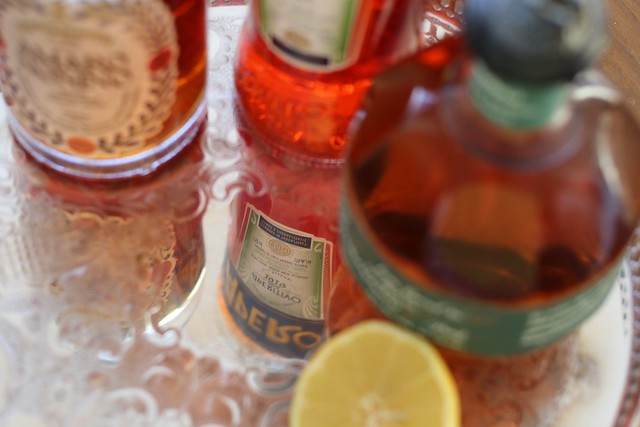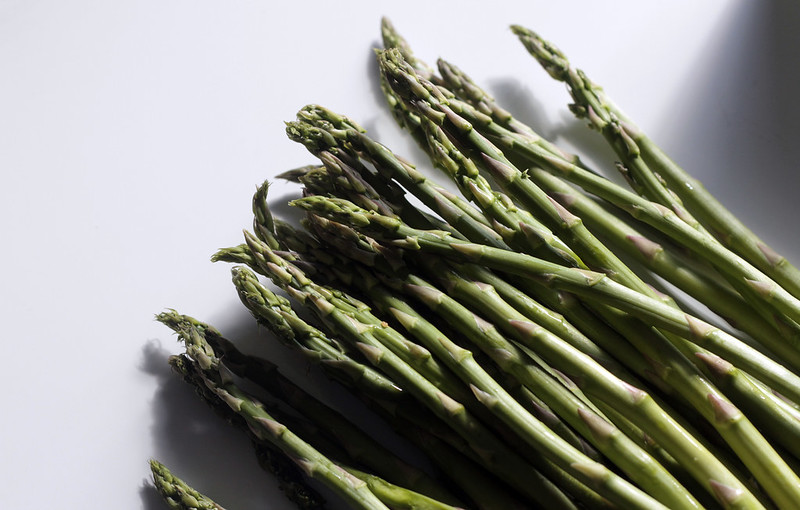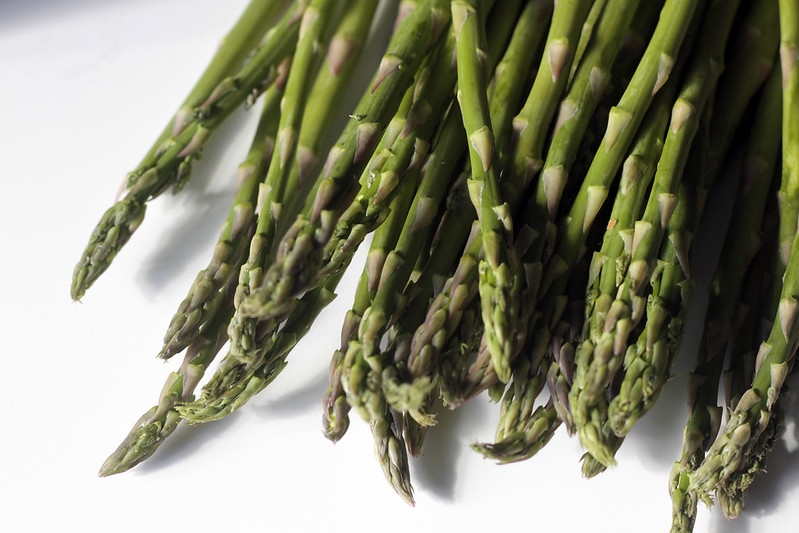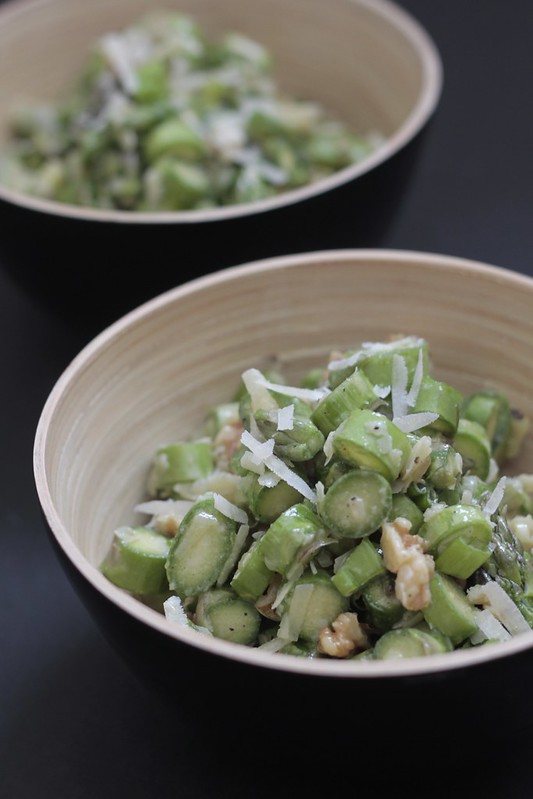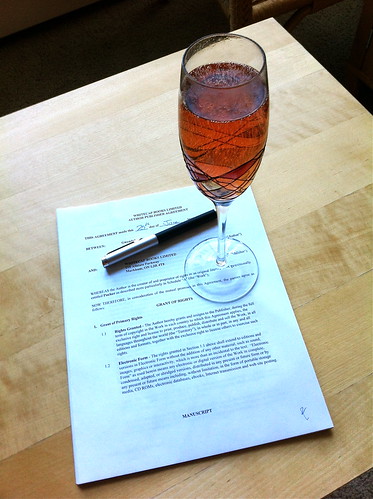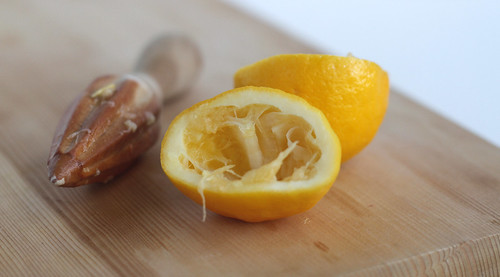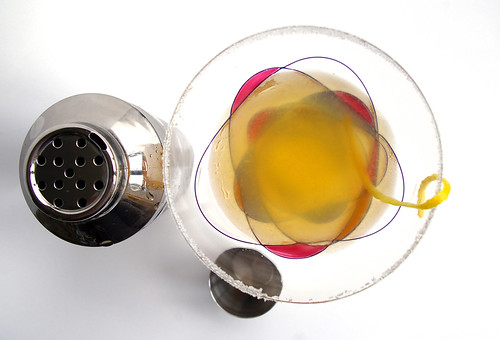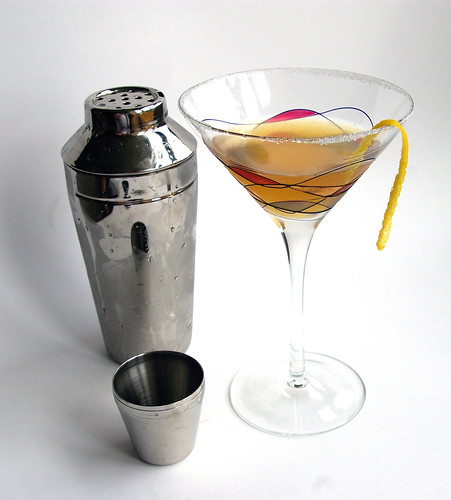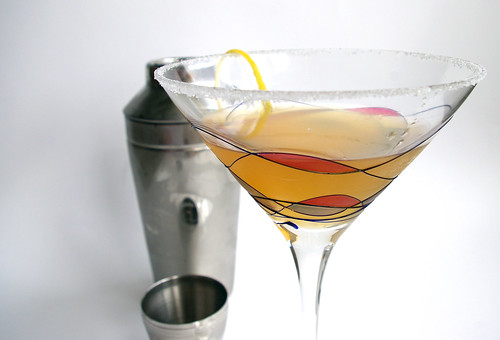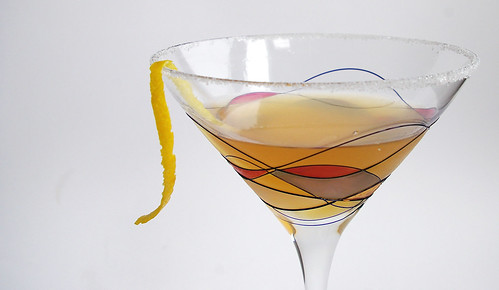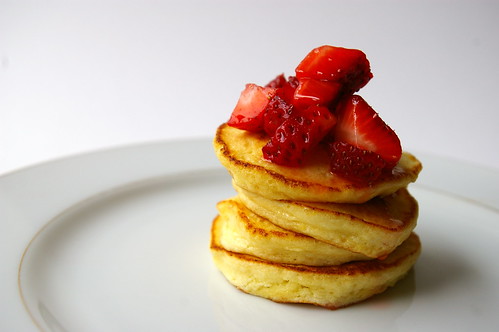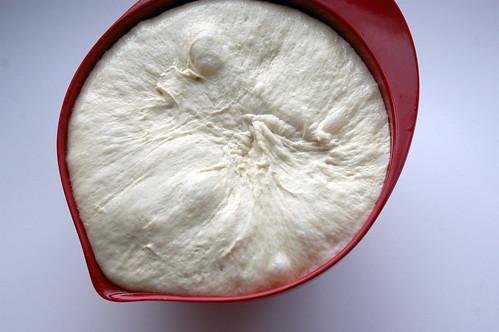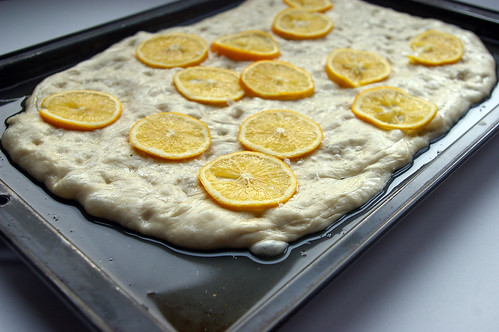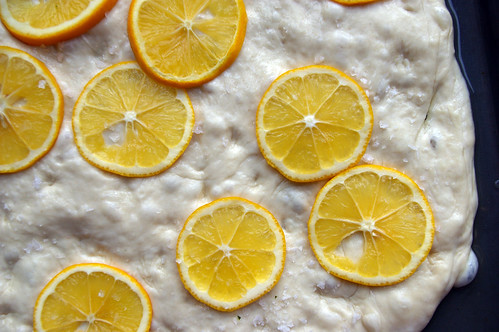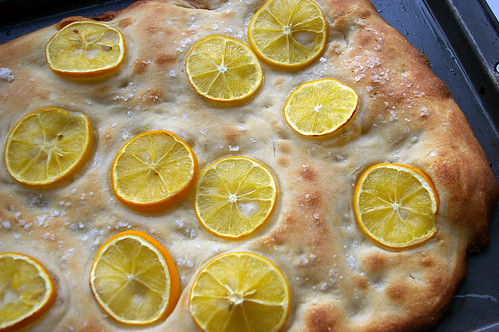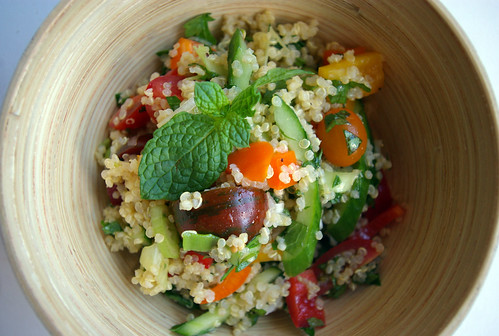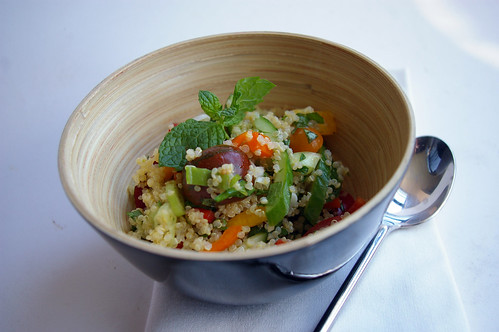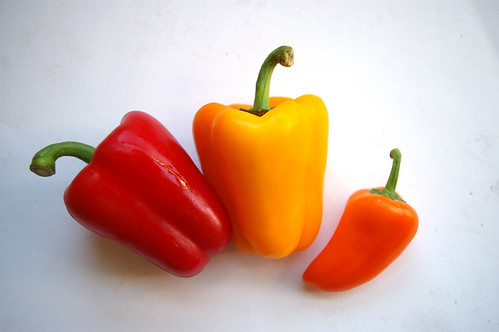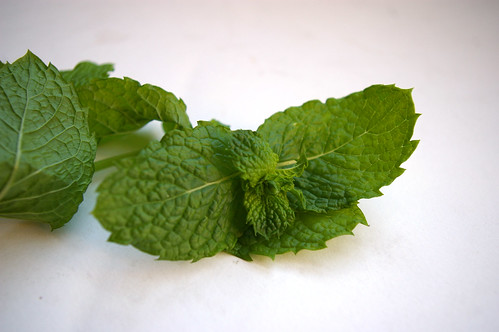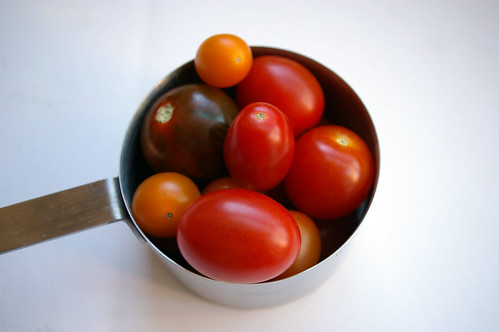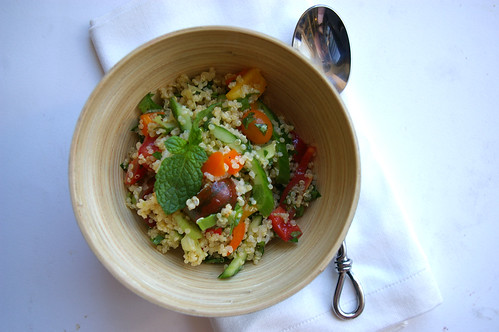Last Saturday, I had drinks on a patio. Sunglasses were a necessity, as was a tall glass of something cold, and good conversation with friends.
All along 17th Avenue, patios were cracked open for the first warm weekend day in March. Tables were jammed with people laughing, drinking and turning their faces skyward to bask in the warm sun.
It’s as sure a sign of the changing seasons as the fact we had to put our clocks forward that night. (Though one is very much preferable to the other.)
It’s nearly spring.
But we’re not quite there yet.
After all, there are still patches of snow and, it being Calgary, we can be assured of one last blast of winter before spring truly arrives.
As I wait for those first green buds to appear, I find myself drawn to eating something that can at least remind me of spring. This Spring Green Risotto from the Barefoot Contessa is a good fit.

The bright green of asparagus and peas, the bright flavour of lemon zest and juice are the tastes and sights of spring. The mascarpone (or, in my case, cream cheese as mascarpone was not to be found) brings a rich creaminess that’s a good last comfort-food hurrah as winter fades away.
Risotto is a bit fussier than other dishes because of the continual stirring, but I think it’s worth the effort. In my experience, you don’t have to be chained to the pot, constantly moving the grains of rice about. You just need to be nearby for frequent stirring.
(I’m sure someone is mentally scolding me right now for that statement, but if the thought of cooking a risotto has put you off because you believe it will be a major arm workout from stirring for 30 minutes non-stop, this is me suggesting you reconsider. No, you can’t walk away; yes, you can do light kitchen tidying at the same time. Or that’s what I did.)
The patience and frequent stirring is worth it. Especially with this recipe.
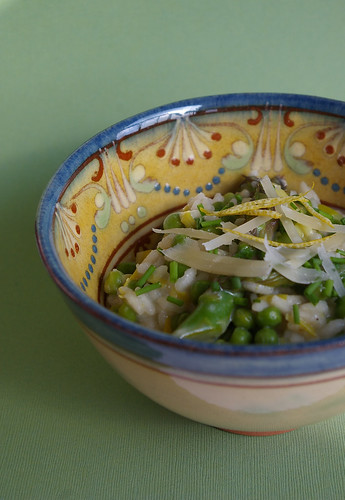
Those little green peas popped with flavour, while the lemon juice made it bright and the cream cheese (see the recipe notes) added a smooth, creamy flavour without too much richness.
It’s enough to tide me over until spring finally does break through. Or at least until the next day warm enough for patio drinks.

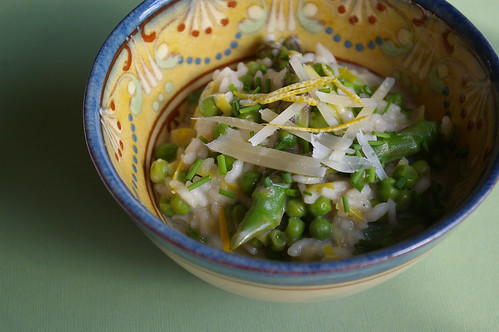
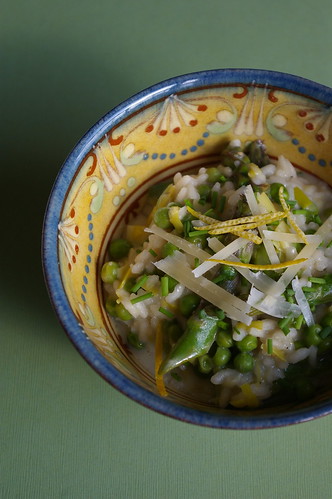
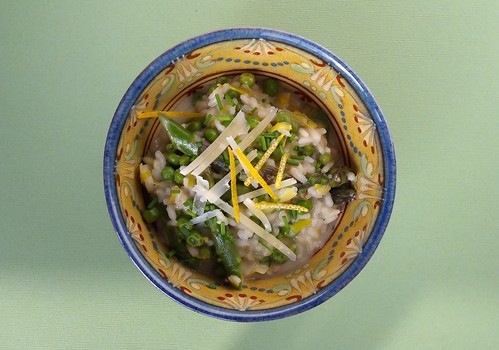
Spring Green Risotto
Adapted from Barefoot Contessa Back to Basics. I omitted the 1 cup (250 mL) of chopped fennel, since I don’t like the flavour. Add it in with the leeks if you’re more of a fan. If you can’t find mascarpone (which I couldn’t – and didn’t want to go searching for in another store), spreadable cream cheese is a decent substitute. It’s less authentic, but was creamy and tangy enough. Using light cream cheese will also cut some of the calories.
- 1 1/2 tbsp (22 mL) olive oil
- 1 1/2 tbsp (22 mL) unsalted butter
- 3 cups (750 mL) chopped leeks, white and light green parts only (about 2 leeks)
- 1 1/2 cups (375 mL) arborio rice
- 2/3 cup (150 mL) dry white wine
- 4-5 cups (1 to 1.25 L) simmering chicken stock
- 1 lb (500 g) asparagus, cut diagonally in 1 1/2-inch (4 cm) lengths
- 10 oz (300 g) frozen peas, defrosted
- 1 tbsp (15 mL) freshly grated lemon zest (about 2 lemons)
- kosher salt and freshly ground black pepper
- 2 tbsp (25 mL) freshly squeezed lemon juice
- 1/3 cup (75 mL) mascarpone cheese
- 1/2 cup (125 mL) freshly grated Parmesan cheese, plus extra for serving
- 3 tbsp (50 mL) minced fresh chives, plus extra for serving
Heat the olive oil and butter in a medium saucepan over medium heat. Add the leeks and saute for 5 to 7 minutes, until tender.
Add the rice and stir for a minute to coat with the leeks, oil and butter. Add the white wine and simmer over low heat, stirring often, until most of the wine is absorbed. Add the chicken stock, a soup ladleful or two at a time, stirring often.
Most of the stock should be absorbed before adding another ladleful. This should take between 25 and 30 minutes.
Meanwhile, blanch the asparagus in boiling salted water for a few minutes, until just tender. Drain and cool in ice water.
When the risotto has been cooking for about 20 minutes, drain the asparagus and add it to the risotto with the peas, lemon zest, 2 teaspoons (10 mL) salt and 1 teaspoon (5 mL) of pepper. Continue cooking and adding stock, stirring almost constantly, until the rice is tender but still firm.
In a small bowl, whisk together the lemon juice and mascarpone.
When the risotto is done, remove from the heat and stir in the mascarpone mixture, plus the Parmesan and chives. Taste and adjust seasonings as necessary.
Sprinkle with chives and more Parmesan to serve.
Serves 4 for dinner, 6 as an appetizer.
This article first appeared in the Calgary Herald. For recipe ideas and stories about food, check out the Herald’s food page.


